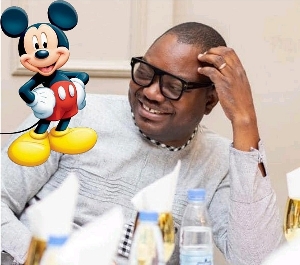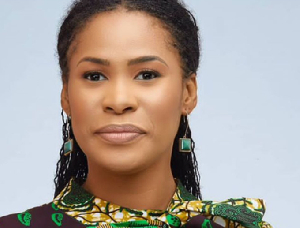A report by the Centre for Media Analysis (CMA) has revealed that the Chairperson of the Electoral Commission, Mrs Charlotte Osei, is highly mistrusted by Ghanaians.
According to the report, majority of Ghanaians expressed misgivings about the EC Chair‘s appointment.
The report said Mrs Osei recorded 22% incompetency, 21% public mistrust, 20% sexual inducement, 18% corruptible character and 19% political bias.
“All the framing thematic categories analysed by CMA reveals the extent at which, she was negatively portrayed in the media which could dent her integrity, the office she holds and the nation as whole. The research also revealed that, some framers portrayed her positively in the media which however, cannot outweigh the negative frame she recorded,” CMA stated in a statement.
Media Analyst at CMA, have therefore urged individuals and institutions to be mindful of how they use the media to set certain framing precedents about political appointed leaders to preserve the integrity of the office they hold.
Below is the full statement:
Chairperson of the Electoral Commission highly mistrusted: Centre For Media Analysis Report
The appointment of Chairperson of the Electoral Commission, Mrs. Charlotte Osei by Former President John Dramani Mahama was greeted with mixed reactions from the general public in June 2015.
While some expressed misgivings about her appointment, others were of the opinion that, the former president made the right choice to replace Dr. Kwadwo Afari Gyan who retired.
Prior to the 2016 general elections, Mrs. Charlotte Osei`s credibility to conduct free and fair elections became a major issue of concern to some Ghanaians. This perception created in the mindset of the public was a result of how some institutions and a cross section of the public tagged her appointment as being unfair and politically motivated.
However, controversies surrounding her credibility worsened when she was also allegedly fingered in some financial malfeasance after the 2016 general elections which is currently under probe. The media was a key platform used by the institutions and individuals to frame the EC chair which likely caused her to be seen in a certain mindset of the public.
It is against this backdrop that, Centre for Media Analysis (CMA), an independent media research organisation conducted a scientific research to establish how framers framed the EC chair in the Ghanaian media which likely let the public lost trust in her and the office she holds.
Per finding of the research, both institutions and individuals set a precedent which portrayed Mrs. Charlotte Osei highly mistrusted in the media to the public. She recorded 22% incompetency, 21% public mistrust, 20% sexual inducement, 18% corruptible Character and 19% political bias. All the framing thematic categories analyzed by CMA reveals the extent at which, she was negatively portrayed in the media which could dent her integrity, the office she holds and the nation as a whole. The research also revealed that, some framers portrayed her positively in the media which however, cannot outweigh the negative frame she recorded.
Mrs. Charlotte Osei recorded 0% non-political bias, 7% non-sexual inducement, 14% competence, 22% non-corruptible character and 57% public trustworthy. Media analysts at CMA have observed that, Political parties and their representatives framed her highly negative.
Media Analyst at CMA, are urging Individuals and institutions to be mindful of how they use the media to set certain framing precedents about politically appointed leaders to preserve the integrity of the office they hold and the nation as a whole, CMA is of the view that, unnecessary framing of institutions and individuals could act as a trigger for socio-political conflicts in Ghana and should be avoided.
The research was based on scientific tracking of news content in the media (Online and print) from June 2015 to December 2017.
Click to view details



General News of Wednesday, 10 January 2018
Source: classfmonline.com
EC Chair highly mistrusted – CMA report
Opinions
















